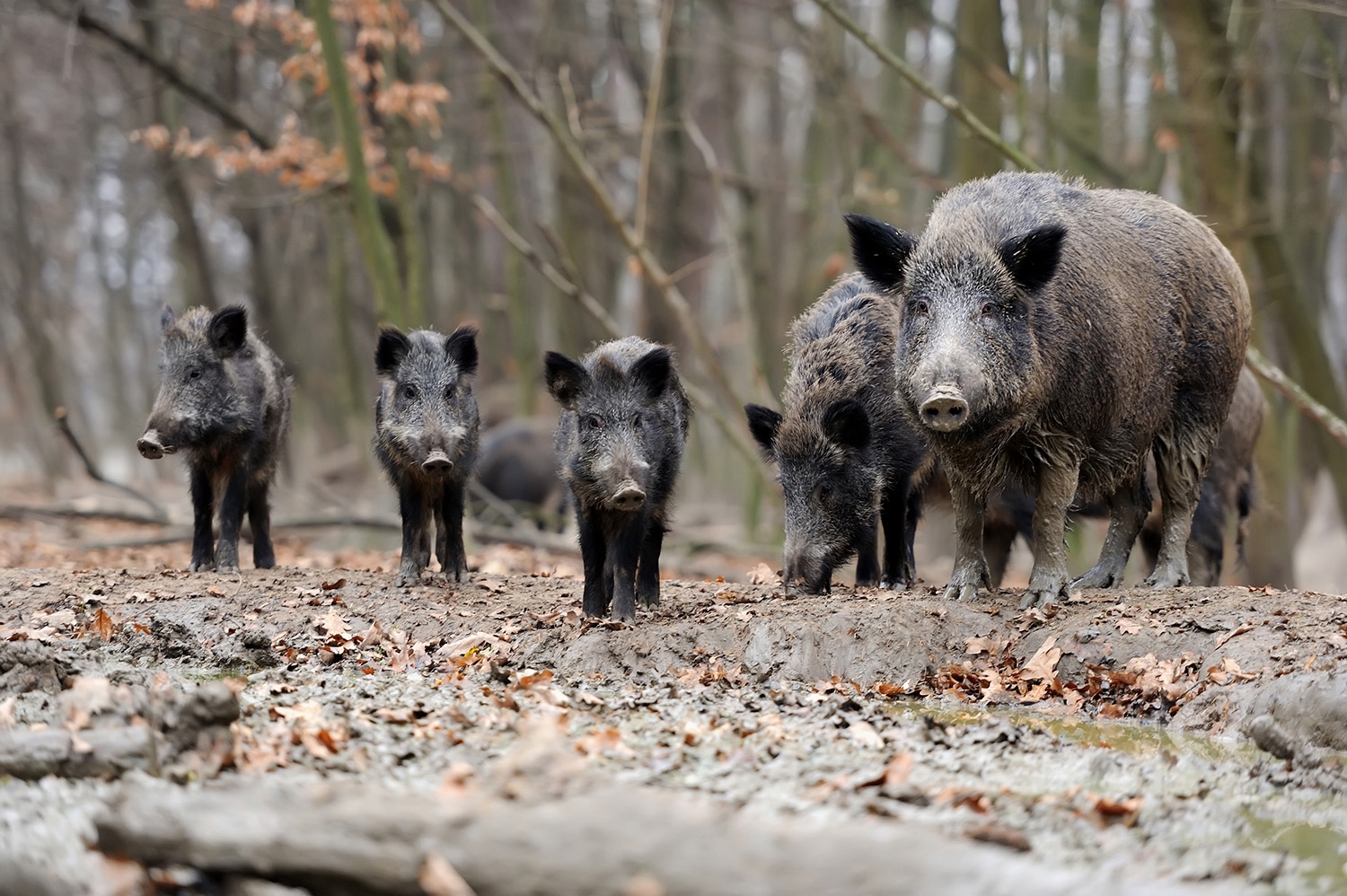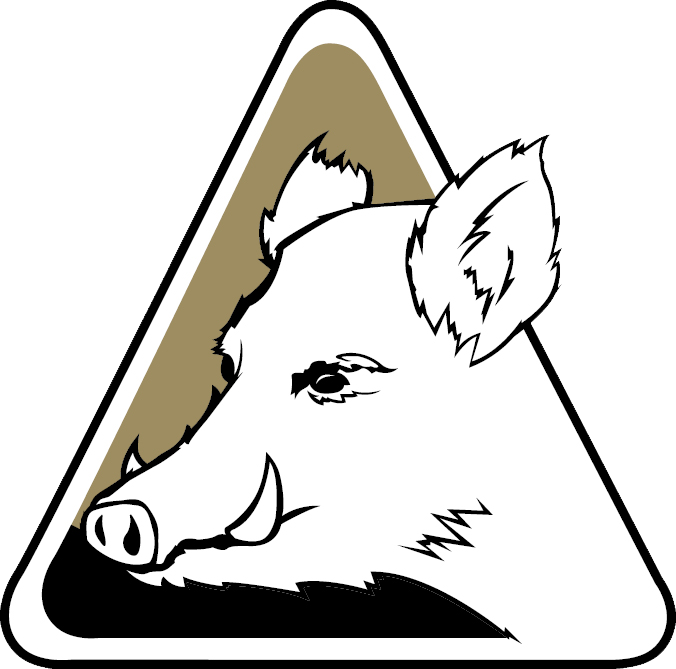
Feral swine often look very similar to domestic hogs, but are generally thinner with thicker hides of coarse bristly hair and longer tusks.
Because of their extensive crossbreeding, feral swine vary in color and coat pattern, including combinations of white, black, brown, and red. Piglets are often striped or spotted, but lose this coloration as they mature. Some look like pure Russian or Eurasian wild boars, while others look more like domestic pigs. Feral swine should not be confused with the collared peccary (javelina), a native pig-like mammal of the American Southwest which is generally much smaller than feral swine (15–25 lbs.) and silver-grey to black in color with a defined lighter colored collar.
What To Look For
Adult feral swine weigh between 75 and 250 pounds on average, but some can get twice as large. This invasive species can reach 3 feet in height and 5 feet in length. Males (boars) are larger than females (sows).
Feral swine are muscular and strong, and can run up to 30 miles per hour. Like deer and domestic pigs, feral swine have cloven hooves. Although feral swine tracks look similar to deer tracks, they have a blunter-tipped toe, and their tracks have a square shape, compared to the pointed heart-shaped tracks of deer.
Feral swine can breed year-round and can have up to two litters of 4 to 12 piglets per year. Since they become sexually mature at 6 to 8 months of age, feral swine populations have the potential to double in size in 4 months, which is why population management is so important.
Feral swine generally travel in family groups, called sounders, composed of two or more adult sows and their young. Sounders can vary in size, including a few individuals to as many as 30 members. Adult boars usually live alone or in bachelor groups, only joining a sounder to breed. Because they are usually active at night, feral swine are less frequently seen during daylight hours, particularly in hot, humid climates. It may be easiest to identify feral swine in your area by looking for signs of damage.
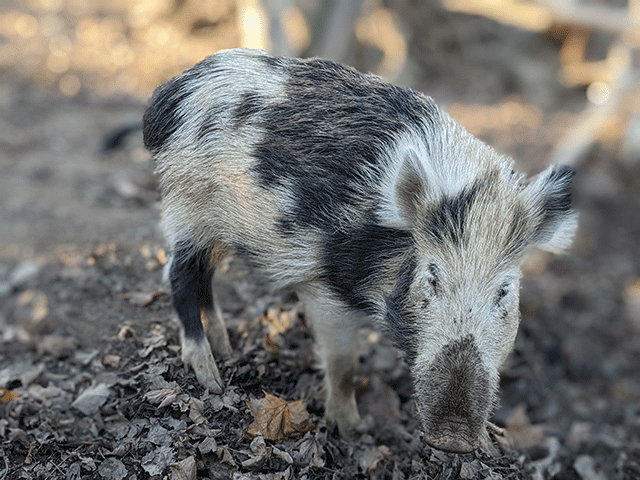
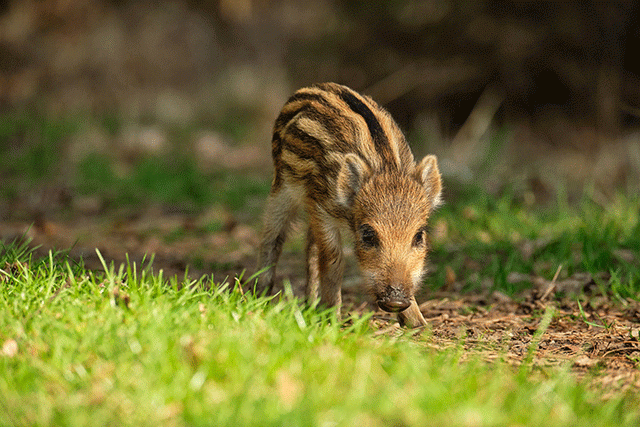
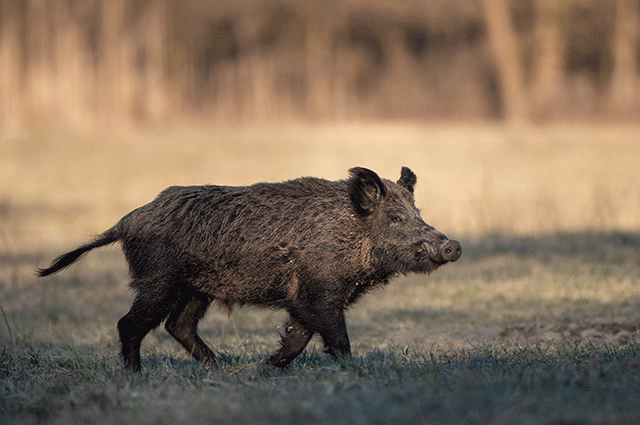
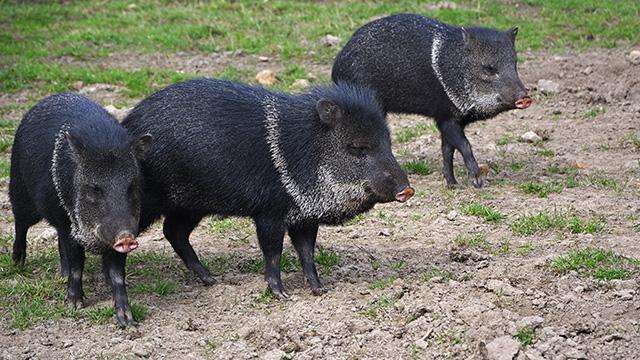
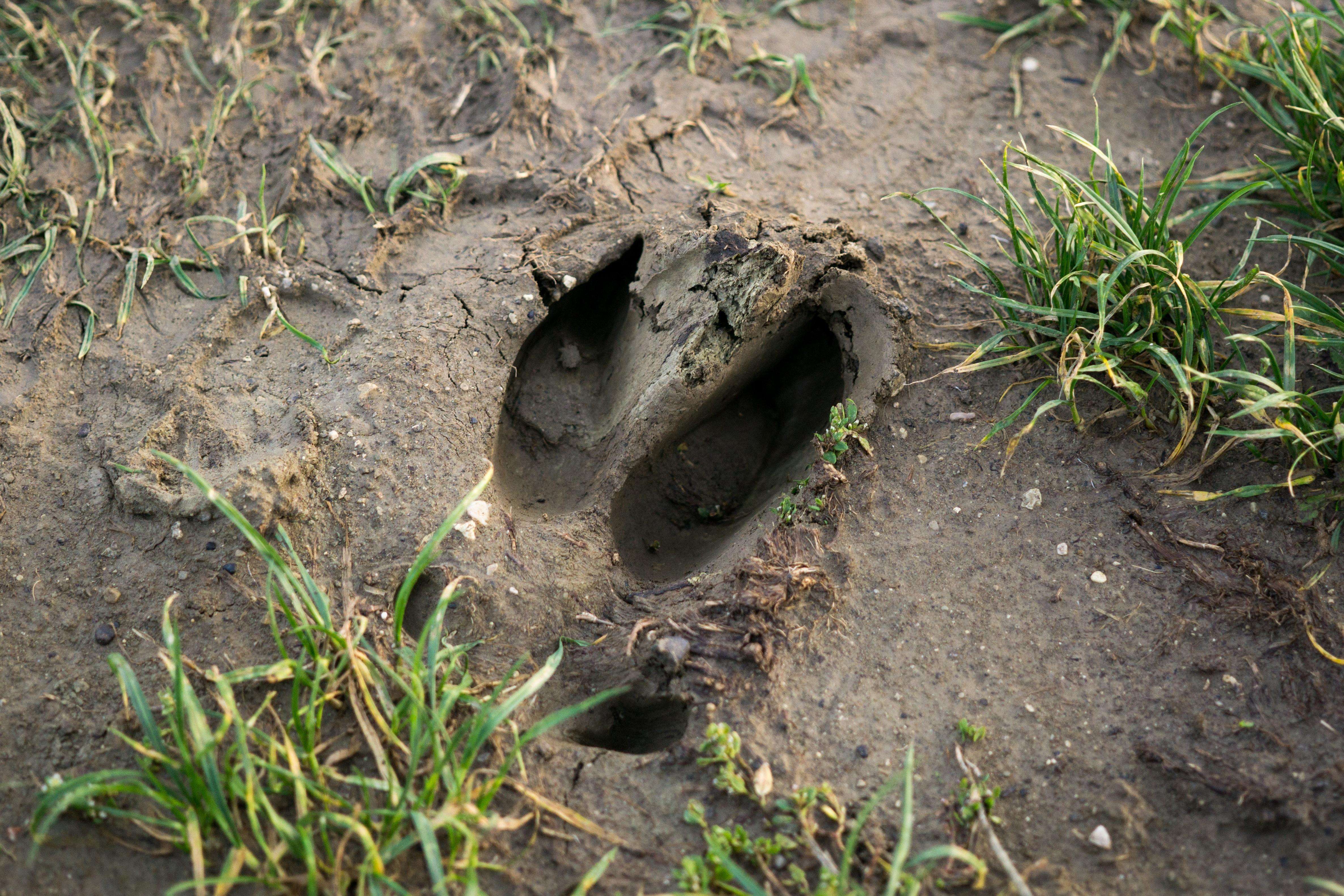
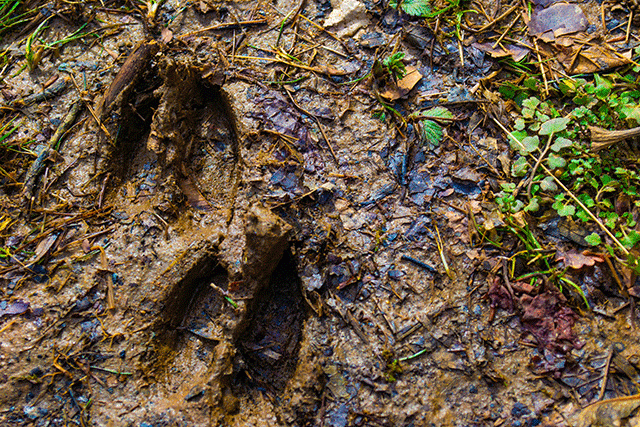
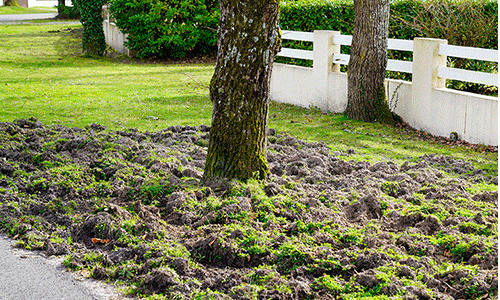
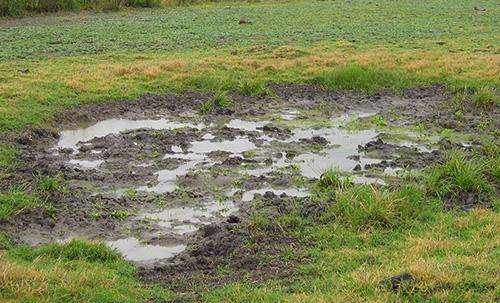
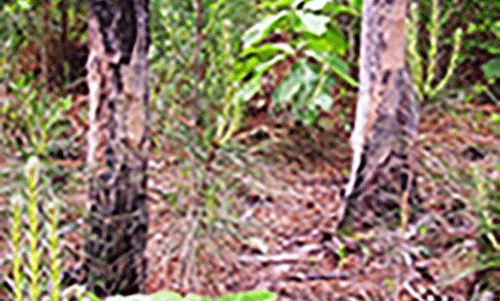
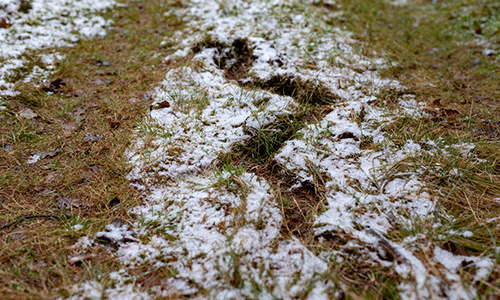
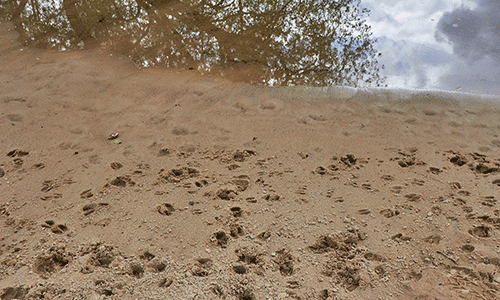
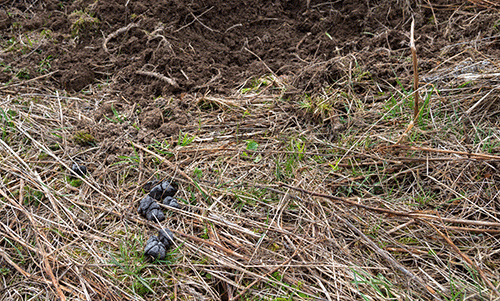
Feral swine can vary in color and coat pattern, including combinations of white, black, brown, and red.
Feral swine piglets are often striped or spotted, but lose this coloration as they mature.
Longer than they are tall, feral swine are much larger than collared peccary (also known as "javelina").
Collared peccary—also known as “javelina”—are smaller than feral swine, with a square build, distinct lighter collar of fur, and no tail.
Feral swine track—note the rounded shape of the hoof print.
Deer tracks—note the pointed heart shape of the hoof print.
Extensive rooting or digging generally occurs as feral swine search for food.
Muddy wallows, especially in moist areas during warmer months.
Tree rubbing, which often occurs after wallowing.
Tunnels and trails leading through thick vegetation.
Hoof tracks in the mud near springs, ponds, and streams
Scat, which resembles dog feces and may contain partially digested remnants of acorns, grains, and the hair, scales, or feathers of animals that feral swine have eaten.


